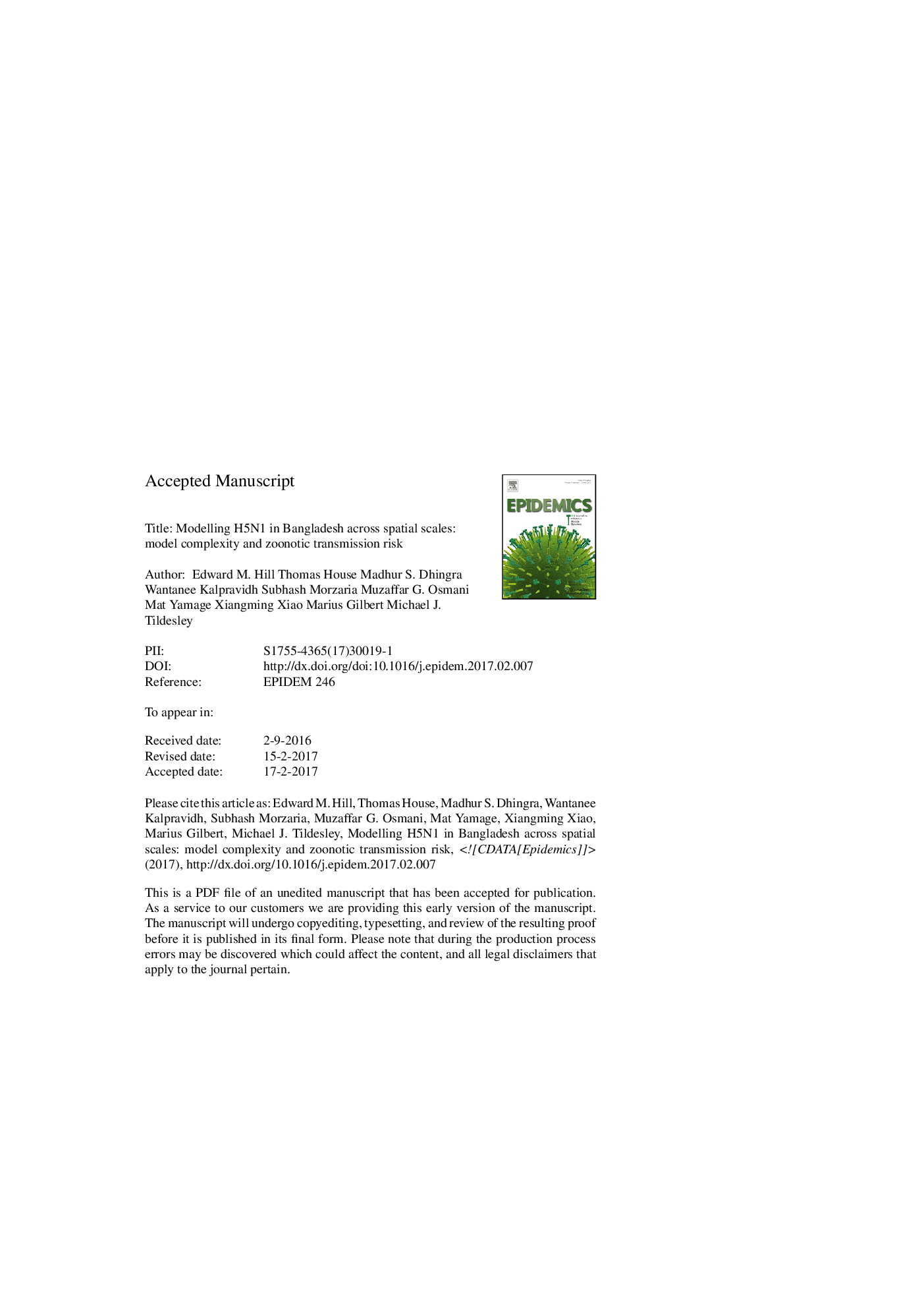| کد مقاله | کد نشریه | سال انتشار | مقاله انگلیسی | نسخه تمام متن |
|---|---|---|---|---|
| 5588925 | 1569427 | 2017 | 58 صفحه PDF | دانلود رایگان |
عنوان انگلیسی مقاله ISI
Modelling H5N1 in Bangladesh across spatial scales: Model complexity and zoonotic transmission risk
دانلود مقاله + سفارش ترجمه
دانلود مقاله ISI انگلیسی
رایگان برای ایرانیان
کلمات کلیدی
موضوعات مرتبط
علوم زیستی و بیوفناوری
علوم کشاورزی و بیولوژیک
بوم شناسی، تکامل، رفتار و سامانه شناسی
پیش نمایش صفحه اول مقاله

چکیده انگلیسی
Highly pathogenic avian influenza H5N1 remains a persistent public health threat, capable of causing infection in humans with a high mortality rate while simultaneously negatively impacting the livestock industry. A central question is to determine regions that are likely sources of newly emerging influenza strains with pandemic causing potential. A suitable candidate is Bangladesh, being one of the most densely populated countries in the world and having an intensifying farming system. It is therefore vital to establish the key factors, specific to Bangladesh, that enable both continued transmission within poultry and spillover across the human-animal interface. We apply a modelling framework to H5N1 epidemics in the Dhaka region of Bangladesh, occurring from 2007 onwards, that resulted in large outbreaks in the poultry sector and a limited number of confirmed human cases. This model consisted of separate poultry transmission and zoonotic transmission components. Utilising poultry farm spatial and population information a set of competing nested models of varying complexity were fitted to the observed case data, with parameter inference carried out using Bayesian methodology and goodness-of-fit verified by stochastic simulations. For the poultry transmission component, successfully identifying a model of minimal complexity, which enabled the accurate prediction of the size and spatial distribution of cases in H5N1 outbreaks, was found to be dependent on the administration level being analysed. A consistent outcome of non-optimal reporting of infected premises materialised in each poultry epidemic of interest, though across the outbreaks analysed there were substantial differences in the estimated transmission parameters. The zoonotic transmission component found the main contributor to spillover transmission of H5N1 in Bangladesh was found to differ from one poultry epidemic to another. We conclude by discussing possible explanations for these discrepancies in transmission behaviour between epidemics, such as changes in surveillance sensitivity and biosecurity practices.
ناشر
Database: Elsevier - ScienceDirect (ساینس دایرکت)
Journal: Epidemics - Volume 20, September 2017, Pages 37-55
Journal: Epidemics - Volume 20, September 2017, Pages 37-55
نویسندگان
Edward M. Hill, Thomas House, Madhur S. Dhingra, Wantanee Kalpravidh, Subhash Morzaria, Muzaffar G. Osmani, Mat Yamage, Xiangming Xiao, Marius Gilbert, Michael J. Tildesley,